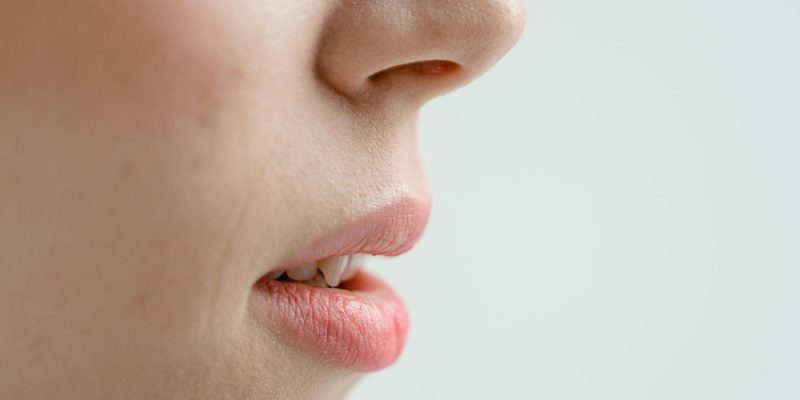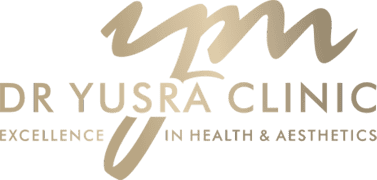Nose Job Recovery Time: How Long Does It Take?
Posted on 7th March 2024 by Dr Yusra Al-Mukhtar

Rhinoplasty, colloquially known as a “nose job,” is a surgical procedure that aims to alter the shape, size, or function of the nose. It’s a popular cosmetic surgery worldwide, with thousands of people opting for this procedure each year.
The reasons for undergoing rhinoplasty can vary widely, from correcting a deviated septum to improve breathing difficulties to more cosmetic reasons like enhancing facial symmetry and boosting self-confidence.
Like all surgical procedures, a common question regarding rhinoplasty is “How long does the recovery period last?” This blog will explain just that! Before we jump straight into the recovery times, let’s start by understanding what exactly is involved in nasal surgery so you know what it is that you are healing from.
What Does a Rhinoplasty Surgery Involve?
A nose surgery can differ based on your needs and goals. This could be to reshape your nose by making it smaller or larger. Whatever your reason, the general steps involved in a rhinoplasty procedure are quite standard.
Typically performed under either a general or local anaesthetic, the procedure begins with incisions made inside the nose or along the tissue between the nostrils (the columella).
Once the incisions are made, the surgeon can access the underlying bone and cartilage. They then sculpt and reshape the nose, either by removing excess bone and cartilage or by adding tissue grafts for augmentation. After the desired changes are made, the skin is re-draped over the new structure, and the incisions are carefully closed.
Common Side Effects to Expect After a Rhinoplasty Operation
As with any surgical procedure, rhinoplasty has potential side effects and risks. While these side effects are usually temporary and reduce as the nose heals, they will vary from person to person. After a rhinoplasty operation, you may experience:
Swelling and Bruising
After facial plastic surgery, it’s common to experience increased nasal swelling and bruising. In some cases, you may experience facial swelling around your eyes and nose area, which could make your nose look larger than the final result. These side effects can last up to 3 weeks so it is important to remain patient until your nose has healed to see the final results.
Pain and Discomfort
You can manage pain and discomfort with prescribed pain medications. While your nose is on its healing journey, try to make minimal movements with your nose. For example, avoid vigorous exercise, avoid facial contact and sneeze through your mouth to limit movement that could cause intense pain.
Nasal Stuffiness
Due to swelling and the internal splints often used after surgery, nasal stuffiness is common. Initially, you may have difficulty breathing through your nose but this will pass.
Numbness
Temporary numbness in and around the nose is normal – do not worry! The sensation typically returns gradually as healing progresses. Of course, if you feel that you have some concerns, seek professional advice.
Scarring
While incisions are typically well-hidden, there might be some visible scarring, especially if an open rhinoplasty technique is used. The surgeon will do all they can to ensure this is kept to a minimum.
Infection
Though rare, there is a risk of infection post-surgery. To reduce the risk of this occurring, follow proper aftercare instructions. If you have any worries or concerns during the healing process, be sure to reach out to your surgeon for advice.
Light nosebleeds
It’s important to realise that light nosebleeds for the first few days after surgery are normal and not a cause for concern. If you do experience these side effects, keep your head elevated and try not to blow your nose heavily.
What Is the Rhinoplasty Recovery Timeline?
Understanding the recovery time for rhinoplasty is an in-demand topic. While each person’s healing process varies, here is a general timeline of the initial recovery period that you can expect after nose surgery:
The First Week
During the initial week post-surgery, you will be advised to take it easy and rest due to any post-surgery pain. Swelling and bruising are at their peak during this time. Stitches are typically removed after about a week, and the splint may also come off.
Weeks 2 to 3
By this time, most of the swelling and bruising should have started to subside. While there might still be some visible effects, such as minor swelling, you can often return to work and normal daily activities.
Weeks 3 to 4
At this stage, you should be feeling much better. Bruises, swelling, and redness have faded significantly. At this point, you might be able to resume light exercises or activities.
Weeks 4 to 6
By the end of the first month, you may feel comfortable enough to resume strenuous exercises and activities. However, you must follow the surgeon’s guidelines and avoid activities that could impact the nose.
Several Months
While the majority of the swelling subsides within the first few weeks, it can take several months for the nose to settle into its final shape. You are likely to see the full effects of the surgery within a few months, with residual swelling continuing to diminish.
Up to 6 Months
It can take up to six months for the swelling to disappear completely. This means that the final result of the nose job might not be fully apparent until this time.
Tips During Nose Job Recovery
To ensure your recovery goes as smoothly as possible, the following methods are strongly advised:
- Propping your head up with pillows to reduce swelling
- Avoid hot baths or getting the splint wet
- Avoid blowing your nose or removing crusts until the splint is removed
- Sneezing through the mouth to avoid pressure on the nose
- Avoid strenuous exercises or contact sports for the specified duration (usually 4 to 6 weeks)
Can I Change My Nose Shape Without Surgery?
If you are hesitant about undergoing surgery or looking for less invasive options, non-surgical rhinoplasty, also known as “liquid rhinoplasty,” is a highly recommended alternative.
This procedure involves using dermal fillers to reshape and contour the nose without surgery. This means that there is no need for a long recovery time or uncomfortable side effects.
So, How Does Non-surgical Rhinoplasty Work?
During a non-surgical rhinoplasty, the filler is strategically injected to smooth out bumps, fill in depressions, and improve symmetry. The procedure is quick and requires little to no downtime.
After non-surgical rhinoplasty, you can typically return to your daily activities immediately after the procedure. While this can be a great option for certain aesthetic concerns, it’s essential to understand its limitations.
Unlike surgical rhinoplasty, which can address structural issues and permanently alter the nose’s shape, non-surgical rhinoplasty provides temporary results and offers an aesthetic solution.
The effects typically last from several months to a year, depending on the type of filler used. Rather than being a permanent fix, it will need topping up – like all dermal fillers.
Take Care of Yourself During Your Nose Job Recovery
The recovery time for a nose reshaping surgery, or rhinoplasty, can vary from person to person. While the majority of the swelling and bruising typically subside within a few weeks, it can take several months for the nose to settle into its final shape.
If you do decide to undergo nose surgery, it’s imperative to follow your surgeon’s post-operative instructions carefully for a smooth recovery that reduces the chances of infection.
If you would prefer a less invasive nose reshaping procedure, non-surgical rhinoplasty, offered here at Dr Yusra, is a great solution to improve your nose’s appearance without the need for surgery.
We understand the importance of knowing your options, which is why we offer complete transparency to help you make an informed decision. From nose reshaping to Endolift and Lip Filler, we offer a broad range of safe non-surgical cosmetic procedures.
So, if you’re located in Liverpool or London and are seeking a non-surgical face alteration that produces natural results, book a consultation with us to explore your available options today.

